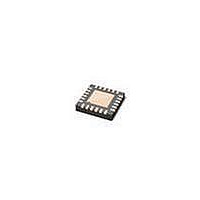ISP1505ABS NXP Semiconductors, ISP1505ABS Datasheet - Page 28

ISP1505ABS
Manufacturer Part Number
ISP1505ABS
Description
RF Transceiver USB2.0/ULPI1.1 XCVR
Manufacturer
NXP Semiconductors
Datasheet
1.ISP1505ABS557.pdf
(76 pages)
Specifications of ISP1505ABS
Number Of Receivers
5
Number Of Transmitters
4
Operating Supply Voltage
3 V to 3.6 V
Maximum Operating Temperature
+ 85 C
Mounting Style
SMD/SMT
Package / Case
HVQFN-24
Maximum Data Rate
480 Mbps
Maximum Supply Current
0.001 mA, 48 mA
Minimum Operating Temperature
- 40 C
Protocol Supported
USB 2.0
Lead Free Status / RoHS Status
Lead free / RoHS Compliant
Other names
ISP1505ABS,557
Available stocks
Company
Part Number
Manufacturer
Quantity
Price
Company:
Part Number:
ISP1505ABS
Manufacturer:
NXP
Quantity:
13
NXP Semiconductors
ISP1505A_ISP1505C_3
Product data sheet
Fig 8.
DATA[7:0]
CLOCK
NXT
STP
DIR
AD indicates the address byte, and D indicates the data byte.
Example of register write, register read, extended register write and extended register read
9.6 Register read and write operations
9.7 USB reset and high-speed detection handshake (chirp)
(REGW)
register write
TXCMD
immediate
Figure 8
addressing and extended addressing register operations. Extended register addressing is
optional for links. Note that register operations will be aborted if the ISP1505 unexpectedly
asserts DIR during the operation. When a register operation is aborted, the link must retry
until successful. For more information on register operations, refer to UTMI+ Low Pin
Interface (ULPI) Specification Rev. 1.1 .
Figure 9
handshake (chirp). The sequence is shown for hosts and peripherals.
show all RXCMD updates and timing is not to scale. The sequence is as follows:
1. USB reset: The host detects a peripheral attachment as low-speed if DM is HIGH and
2. High-speed detection handshake (chirp)
D
as full-speed if DP is HIGH. If a host detects a low-speed peripheral, it does not follow
the remainder of this protocol. If a host detects a full-speed peripheral, it resets the
peripheral by writing to the Function Control register and setting
XCVRSELECT[1:0] = 00b (high-speed) and TERMSELECT = 0b, which drives SE0
on the bus (DP and DM connected to ground through 45 ). The host also sets
OPMODE[1:0] = 10b for correct chirp transmit and receive. The start of SE0 is labeled
T
Remark: To receive chirp signaling, the host must also consider the high-speed
differential receiver output. The host controller must interpret LINESTATE[1:0] as
shown in
a. Peripheral chirp: After detecting SE0 for no less than 2.5 s, if the peripheral is
0
.
capable of high-speed, it sets XCVRSELECT[1:0] = 00b (high-speed) and
OPMODE[1:0] = 10b (chirp). The peripheral immediately follows this with a
TXCMD (NOPID), transmitting a Chirp K for no less than 1 ms and ending no more
shows register read and write sequences. The ISP1505 supports immediate
shows the sequence of events for USB reset and high-speed detection
TXCMD
(EXTW) AD D
register write
Table
extended
11.
Rev. 03 — 26 August 2008
TXCMD
(REGR)
register read
immediate
D
ULPI HS USB host and peripheral transceiver
ISP1505A; ISP1505C
TXCMD
(EXTW)
register read
extended
AD
D
Figure 9
© NXP B.V. 2008. All rights reserved.
004aaa710
does not
27 of 75
















